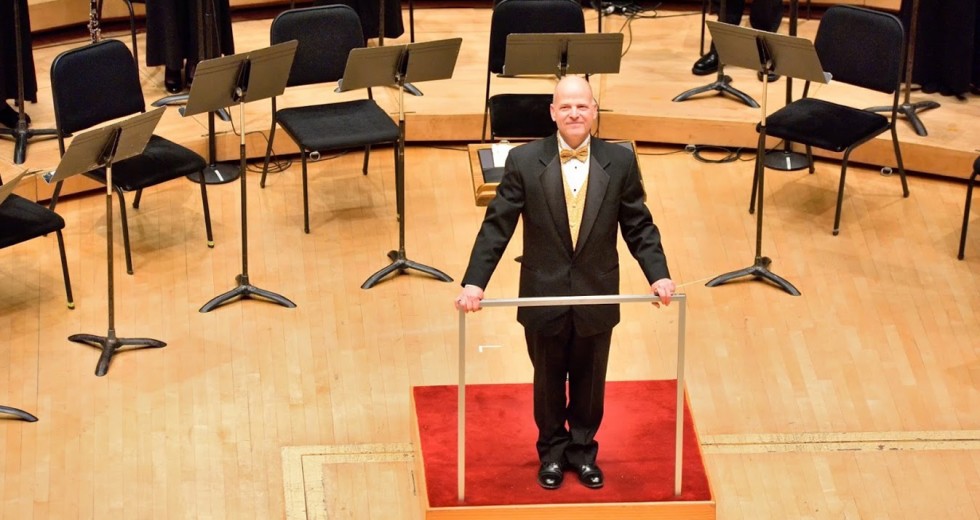
As a part of Music in Our Schools Month, we are featuring a number of music educators and their work in music advocacy. All of them exemplify the values of Citizen Musicianship through their dedicated teaching and by being enthusiastic champions for the arts.
Chip Staley is the fine arts department chair at Neuqua Valley High School in Naperville, Ill. While the program is extensive, providing opportunities for students to participate in the arts through many different mediums – including music, art, theater and dance – Neuqua Valley High School also provides an important platform for advocacy work through ARTSpeaks. ARTSpeaks is a committee of arts education stakeholders in the Naperville area that sponsors events raising awareness of the role the arts play in a comprehensive public school education, particularly in developing 21st century skills that are essential for success. To learn more about ARTSpeaks, please visit ARTSpeaks204.org.
How has music shaped your life?
I found my voice in middle school, through music. Once I started, there was never a question that I wanted to continue playing, and my teachers really affirmed my appreciation for the art form.
Can you give a basic overview of your program?
Once the students are in seventh grade, taking a music class is no longer mandatory. That is the first year that they can decide whether or not they want to take band. We have over 1,000 students involved in music at NVHS. We have eight orchestras, eight bands and seven choirs. We also have extracurricular ensembles: two jazz choirs, four jazz bands, a steel band, a fiddler group, a symphony orchestra, a percussion ensemble, a world voices group and a musical theater orchestra. We have eight full-time music teachers.
How has the music program changed in the time that you’ve been there, and what are some things you hope to see in the future?
When the school opened in 1997, we only had two starting classes, freshmen and sophomores. At that time we had 200 students in the music program, but I would attribute the majority of the growth in our music program to the growth of the school’s population.
My greatest desire is to see the students have a continued opportunity to participate in a rigorous music curriculum. I also want the community to see the arts as something that’s vital and essential for the health of the student body and the community.
What are some of your favorite memories as a teacher?
It’s difficult to articulate what my favorite memory is – I define “favorite” very differently than other people. But I’d have to say that working with our Drum Circle, which is open to students with special needs, is one of them. It creates a way for them to interact. Rhythm is a way to draw them out of their diagnoses and bring them into a community.
What inspired you to launch ARTSpeaks? What things do you hope to achieve with the organization?
I’ve found out firsthand that you grow when adversity hits. Four years ago, we were faced with budget cuts to skill-based courses in our district. At that point, the question that I asked myself was, “How do you stop this? How do you keep it from happening again?” I realized that we didn’t do our job letting everyone know what the students are doing through art. So I wanted to find a way to answer those questions. I wanted to give answers to our community, and have them and the students say “this is what music and art has done for me.”
Because scientific studies can only get you so far, people need to see real-live examples, not just brain research or longitudinal studies. [There’s a saying] “Nobody is swayed by evidence, but they can be influenced by stories.” It’s not always about having the evidence, but expressing an appreciation of your experiences in the arts throughout your life. Most people don’t carry around data and statistics, but they do carry stories. And that’s the most important thing that we can share, to educate the general population and give them the language so they can advocate for the arts.
ARTSpeaks is the platform to make that happen. It’s modeled after TED Talks, so at each event, we have three speakers who have a 20-minute time limit. We invite professionals in different fields, all of whom were positively affected by music. We invite doctors, engineers, authors – but they all have backgrounds in music. Our most recent event, we had Gary Vlk, a producer; Pate Conaway, an artist, and we had Thomas Hooten, principal trumpet from the Los Angeles Philharmonic. Not everyone will go on to be a professional musician, but being involved in the arts will help them in their career choices.
We also really want to start reaching younger audiences. Students are being forced into choices in grade schools about their careers, so the earliest that we can show them how the arts can positively impact their career, the better.
What is the most rewarding aspect of your job?
Being able to help students realize their competencies. Music people are always finding things wrong, so it’s a delicate balance. How much of a maestro do they need versus a facilitator? I respect them as musicians – releasing your power to them helps them to grow, and they become their own teachers. Seeing that happen, and seeing the kids create and work together, is very rewarding.



